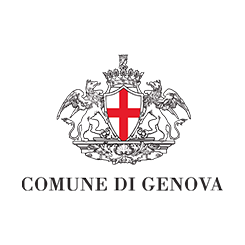When the peloton, almost completely packed, approaches the first ramps of the Poggio, the fans know that they are about to witness the most adrenalin-fuelled and crackling 15 minutes of the entire cycling season. It seems impossible that 3.7 kilometres of climbing at an average gradient barely reaching 4% can so much as tickle a group of professional riders, but after 290 kilometres in the saddle, even the smallest of bumps can turn into a guillotine for the athletes’ legs.
For 63 years now, the Poggio has had the daunting task of deciding the fate of the Milano-Sanremo. For a few minutes, this seemingly innocuous strip of asphalt turns into a stairway to the heaven of legends. In 1960, a couple of months after Fausto Coppi’s passing, patron Vincenzo Torriani was fed up with seeing the peloton reach Sanremo altogether, nothing but an endless procession bound to finish in a sprint without much excitement. One more thing he had had enough of was never seeing Italians win, as in those years Italy had very few fast men, the last victory being Loretto Petrucci in 1953. It was time to change, it was time to get rid of “those damned mass arrivals on the finish straight” as the then editor-in-chief of the Gazzetta dello Sport, Giuseppe Ambrosini, wrote on his newspaper.
Torriani’s intuition paid off right away. The Poggio proved to be decisive, even though it was once again not an Italian who won and not a single Italian even made it into the Top 10. The Italians had to wait until 1970 and Michele Dancelli to celebrate success in the Classicissima. In that historic Poggio debut, it was the Frenchman René Privat who broke away from everyone on the gentle but fierce slopes of the Poggio and flew solo towards Sanremo. Gazzetta correspondent Gianni Cerri was right: “the climb is quite easy, long but incomparable to the gradients these men are used to. Not even the most useless of competitors would lose a metre there. But the challenge is that this climb is literally in the outskirts of Sanremo, and after all those kilometres things get quite unpredictable, anything can happen on the flat, let alone uphill. A lot comes down to how you get at the bottom of the hill, the weather conditions of the day, the pace in the previous 280 km“.
Over the years, the ascent and descent of the Poggio have been the launching pad for the triumphs of Raymond Poulidor, Eddy Merckx, Alfons De Wolf, Marc Gomez, Giuseppe Saronni, Francesco Moser, Giorgio Furlan, who holds the climbing record with an average speed of 39 km/h, and Vincenzo Nibali, to name but a few. For the sprinters, it has become a hefty tax to pay; for the attackers, it is the right time to unleash hell after more than six hours of patient waiting in the saddle; for the fans, it is simply one of the most eagerly awaited moments of the year.
































